In the first part of this blog, my discussion of Dark concentrates on the ways in which the series stands out in relation to other examples of complex television in two senses, in the considerably higher level of complexity of plot and narrative and in the self-referential relationship to this complexity. Dark is a highly complex narrative about complexity, networking and interconnectedness, topics that are very often discussed in dialogues, soliloquies and voiceovers. But there is also a second sense in which Dark is distinctive within the tradition of network fictions.
Characters in novels like Hari Kunzru’s Transmission (2004), films like the Wachowskis’ Cloud Atlas (2012) and television series like Sense8 (Netflix 2015-18) are either located in different parts of the globe or they are ‘often in a state of mobility and travel’ (Mousoutzanis 3). Novels of this kind have been described as the ‘novel of globalisation’ (Rohr) or the ‘global novel’ (Barnard) and similar films are seen as part of the ‘global network film’ genre (Narine). A defining feature of these fictions is ‘their explorations of the ways in which collective tragedy and personal trauma reverberate within an increasingly globalised, interconnected world’ (Mousoutzanis 2). But, unlike all those other examples, Dark was stubbornly local: even when its plot reached a scope that encompassed even the end of the world itself, it never steered away from the small German town of Winden. This may perhaps be an allusion to one of the most influential television series in this genre, J.J. Abrams’s Lost (ABC 2004-10), where the survivors of the crash of flight 815 and any other people who arrived and lived on the mysterious island of the series realise that it is almost impossible to leave.
Sean T. Collins’s review certainly pointed towards such a reading when he suggested that ‘Dark feels like a version of Lost folded in on itself, in which the action on the magical, spacetime-traveling Island and the secret-revealing, surprise-laden, character-driven backstory flashbacks all occur simultaneously’. But in the case of Dark, this aspect of the plot was bound to be coloured with local, national, even provincial connotations. Indeed, if complexity was its first defining feature, its ‘Germanness’ was the second one, from the moment the series was announced to the moment it was released, watched, and reviewed. From the beginning, Dark was pitched as the first German Netflix original series and its first European deal in their attempt to develop programmes in various European markets. Press releases by Netflix, interviews by the producers, reviews by critics and audiences alike often veered on the extent to which the series may be seen as ‘quintessentially German’. In one interview, creator Jantjie Friese admitted that ‘there are some things that are there just to be understood in the German market. For example, we have a reference to a chocolate bar [Raider] that no one outside of Germany will understand. It’s a bar that was rebranded in the 80s, so it will look different in different timezones, but only Germans will know that’ [author’s note: Greeks will know that too]. In another press release, together with co-creator and director Baran bo Odar, they highlighted that they see the show as ‘an incentive for us to explore German viewing habits and to push new boundaries’. Netflix executives followed suit. VP International Originals Erik Barmack described the series as ‘an incredible German story’. ‘This show,’ according to reviewer Andy Hartup, ‘could only have been made in Germany, and it wears the cultural nuances of country and language proudly, making a genuine asset of both’. For Randy Shulman, it was the design of Dark that was ‘one of pure Germanic gloom, with persistent rainfall, drained, desaturated colours, and looming, ominous iconography’. In a similar vein, Antrim added that the series is ‘wrapped in such impeccable German melancholic art direction that you long for a rain-drenched Mercedes station wagon to call your own, not to mention some slim-cut rainwear’. New York Times reviewer John Hale also highlighted the series’ strong ‘European roots’, which, to him, came down to ‘a hushed, brittle artiness’ as well as ‘a lot of voice-over philosophising’. Hale also wondered ‘whether the idea of cutting off evil influences emanating from the past is a specifically German theme’ and Kristina Foster concurred by suggesting that ‘the inescapability of the past has a special poignancy in a series set in Germany’. These are only a few indicative instances of the ways in which responses to the show often resorted to attributes – and stereotypes – associated with this specific culture.
At the same time, the tendency to highlight the Germanness of the series was also followed by another trend to describe the town and the story itself more as archetypal and universal than as national and culturally-specific. Kelly Luegenbiehl was only one of a number of Netflix spokespersons to reiterate the phrase that ‘great storytelling transcends geography’ in their press releases. Similarly, in a RadioTimes interview, Friese specifically admitted that they ‘didn’t want to colour it with a specific Bavarian or northern German setting. We wanted it to be somewhere that could be everywhere’. bo Odar agreed: ‘We always work in a way that we try to tell a story that works everywhere. We don’t believe in local stuff’. Instead, they explained their choice of setting by referring to the archetypically provincial: ‘We both come from small towns’. (In this case, the theme of interconnectedness acquires different connotations: in small communities, everyone is indeed inter-related in one way or another.) Regardless, the national identity constructed within and without the series seems to be one that is deliberately foregrounded yet curiously deterritorialised for the appeal of global audiences – according to Variety, about 90 percent of the audience of the first season originated from outside of Germany. What seems to be at work here then is what Scott Robert Olson describes as ‘transparency’ during his discussion of the ways in which Hollywood films achieve global success. Transparency refers to ‘the capability of certain texts to seem familiar regardless of their origin, to seem a part of one’s own culture, even though they have been crafted elsewhere’ (120). Hollywood films thus seem both very American yet generic enough to appeal to audiences from different cultures. This quality, Olson suggests, is achieved through reliance on archetype and myth (in both the traditional and the Barthesean sense of the term), which makes it even more relevant to Dark, not only because of the creators’ references to provincial culture but also because of the increasing Biblical references, which became even more pronounced during its final season.
So, the question is, what is distinctively-German-yet-globally-digestible about the series? There are three elements that we may identify here. First, the nostalgic references to 1980s popular culture, which instantly led to copious reviews comparing the German series to Stranger Things (Netflix 2016-present), most of them later proceeding to deconstruct these analogies when Dark’s own distinct vision became clearer. From the reviews cited so far, perhaps Fienberg’s is most appropriate here in the suggestion that the series played ‘into Teutonic stereotypes’ and felt like ‘a brooding European take on Stranger Things’. Indeed, the mellow nostalgia of the American series stood in stark contrast to the blunt, even bleak, tone of Dark towards 1980s popular culture. For instance, when Nena’s hit ‘Irgendwie Irgendwo Irgendwann’ is played during a child torture scene at the end of the first episode or when we hear ABC’s ‘The Look of Love’ playing on the radio during a child autopsy scene in the third episode.
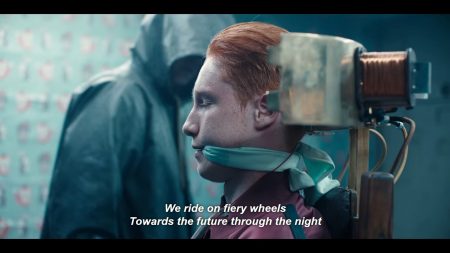
Fig. 3: Im Sturz durch Raum und Zeit….
Perhaps Dark’s attitude towards the currently-trending, Stranger-Things-style, 1980s nostalgia is epitomised in the last episode of the first season, ‘Alpha and Omega’, where Noah Tauber (Mark Waschke) specifically says: ‘No DeLorean. No hissing or steam. The first time-machine is a bunker with four walls’. ‘Europe’s version of the ’80s’, Brad Newsome wrote, ‘is different – the cars are smaller, the pop and heavy metal are darker, and the shadows of Chernobyl and the Berlin Wall project a still deeper gloom’. What makes the series distinctively European and German then is its use of 1980s popular culture in order to develop even further its gloomy, bleak vision. You know it’s a German apocalypse when there’s a Modern Talking gig poster in it.
The second and third elements may be found in another interview by Friese herself: ‘What is German? What can we put out in the world apart from the Second World War – which I still think is also in Dark, even though we’re not in the timeline. I personally feel that a lot of very great philosophers came out of from German history. So, I felt that’s something to give’. The central preoccupation with the interplay between determinism and free will has an important place in the work of German philosophers and scientists that the series directly refers to, such as Arthur Schopenhauer, Friedrich Nietzsche and Albert Einstein. At this point, the second distinctive feature of the series folds back upon its first, in true Dark fashion. In a similar vein, meta-complexity, the ability to interweave a transtemporal plot so intricate and labyrinthine so successfully may be seen as described in tvtropes.org, as ‘an exercise in Germanic Efficiency’. In this respect, reiterated metaphors of a ‘well-oiled machine’ used by the media to describe the German football team’s performance in the 2014 World Cup 2014 may be just as applicable to the plot of this series. This would certainly be the case with regard to the series’ penultimate episode, ‘In Between Days’, which travels back and forth across 12 different points in time in order to tidy up any final loose ends before the epic finale.
Finally, the choice of philosophy over history as a marker of national identity that Friese confirms was directly addressed in a sustained critique of the series by Matt Brennan, who was scathing of ‘a series so obsessed with time’ that could be ‘so innocent of history’, even if major timelines are set at the aftermath of the Second World War and shortly before the collapse of the Berlin Wall. His critique perhaps deserves lengthy citation:
Despite the unease that accompanies the nuclear facility, from its construction to Chernobyl to its looming closure, Dark’s allegorical implications—the atomic age as a kind of calamitous wrinkle in time—are ultimately crowded out by the attention to Winden’s family trees, to the lunar-solar cycle, to the secrets and lies and tattoos and scars so familiar from its TV counterparts. We are left, rather, with a German police officer in 1953 wondering if one is born a murderer or becomes one—and no indication of what the rise and fall of Nazism might have done to shape the answer to his question. We are left with the Sony Walkman, a pfennig coin, and the popularization of death metal in 1986—and no suggestion of the divided nation implied by their presence. Not all German fictions need wrestle with its past to be worth consuming, of course. But a treatment of time so invested in timelessness, deploying period details when it’s convenient and sweeping them under the rug when it’s not, may not be a series as concerned with connections and consequences as it wants us to think: Whether intimate or writ large, history is the thread that links causes and effects into a coherent narrative, even when traveling through time can change that narrative after the fact.
There are reasonable points raised here and worth considering. Brennan was also reviewing the first season, whereas episodes in the other two include more direct references to German history. When Jonas finds himself accidentally in 1921, for instance, the locals think that he is a returning veteran of the Eastern Front against now formerly tsarist Russia. More indirectly, first-season finale ‘Alpha and Omega’ is set on 12 November across all timelines, that is, a day after Germany’s surrender in the First World War. But, individual examples aside, a more general response to such critique would be that, with the odd exceptions discussed in Part I, Dark never gave anything away at face value and it would seem out of line to do such thing for its historical references. A closer look reveals that, in fact, Dark is steeped in history. It is in imagery like the ‘Atomenergie? Nein Danke’ t-shirt on Mad’s dead body. It is in minor scenes, like the one set in 1987 in ‘Lost and Found’, when the warden guarding older Ulrich Nielsen (Winfried Glatzede) makes a random praise of Ronald Reagan and the ‘visionary’ Olympic games in East and West Berlin. It is in discreet plot details, as in young Tronte Nielsen’s (Joshio Marlon) cigar burns on his arms, caused by his abusive mother for him being the child of a rape by a Soviet soldier. It is also there, in the former Soviet Military base in Berlin that provides the location for the post-apocalyptic future:
And it is there, at the very entrance to Tannhaus factory, the space that sparks the rift in time to start a hellish loop of loss, death and trauma:
If anything, this mode of engagement with history at a more indirect, subtextual level is a perfect indicator of the ways in which the two distinguishing features of Dark – complexity and national identity – interweave together seamlessly.
It remains to be seen what the legacy of the series will be in the long term, but, for the time being, it is perhaps not inaccurate to suggest that its intriguing storyline and its own construction as a non-Anglophone text that is both recognisable and culturally specific at the same time may also be the major factors that account for its phenomenal success.
Aris Mousoutzanis is a Principal Lecturer in Film & Screen Studies at the University of Brighton. He teaches and researches on popular genre (science fiction; Gothic/horror; (post-)apocalypse; utopia/dystopia); trauma theory and memory studies; media, imperialism and globalisation. He is currently working on a project on utopia and biopower and one on media and nostalgia.
References
Mousoutzanis, A., 2016. ‘Network Fictions and the Global Unhomely’, C21 Literature: Journal of 21st-Century Writings. 4:1, pp. 1-19. DOI: https://doi.org/10.16995/c21.7.
Narine, N., 2010. ‘Global Trauma and the Cinematic Network Society’, Critical Studies in Mass Communication 27:3, pp. 209-234. DOI: https://doi.org/10.1080/15295030903583556.
Olson, S.R., 2004. ‘Hollywood Planet: Global Media and the Competitive Advantage of Narrative Transparency’ in Allen, S. and Hill, A. (eds.) The Television Studies Reader, Routledge: London, pp. 11-129.
Rohr, S., 2004. ‘“The Tyranny of the Probable”: Crackpot Realism and Jonathan Franzen’s The Corrections’, Amerikastudien 49:1, pp. 90–105. http://www.jstor.org/stable/41157914.





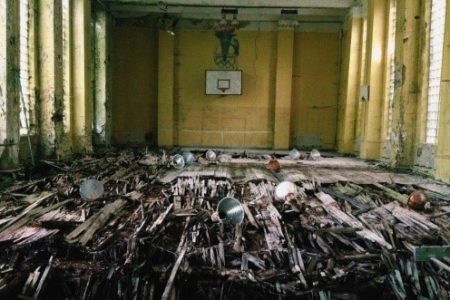
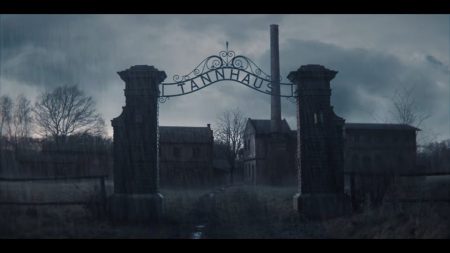
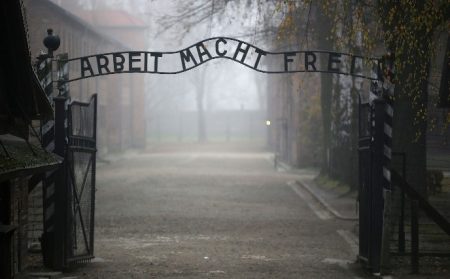

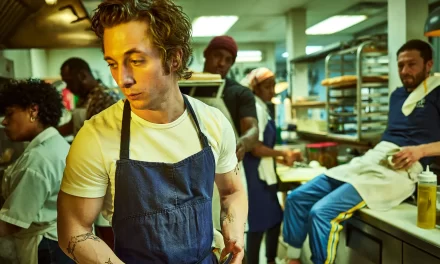
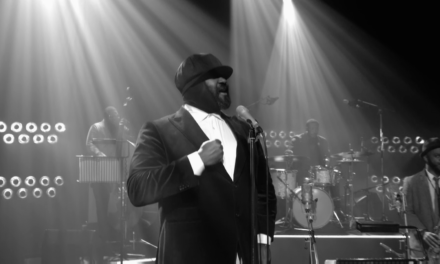
Now even more intrigued than I was with Part I. Nice one! Many thanks! 🙂
All the best
Andrew